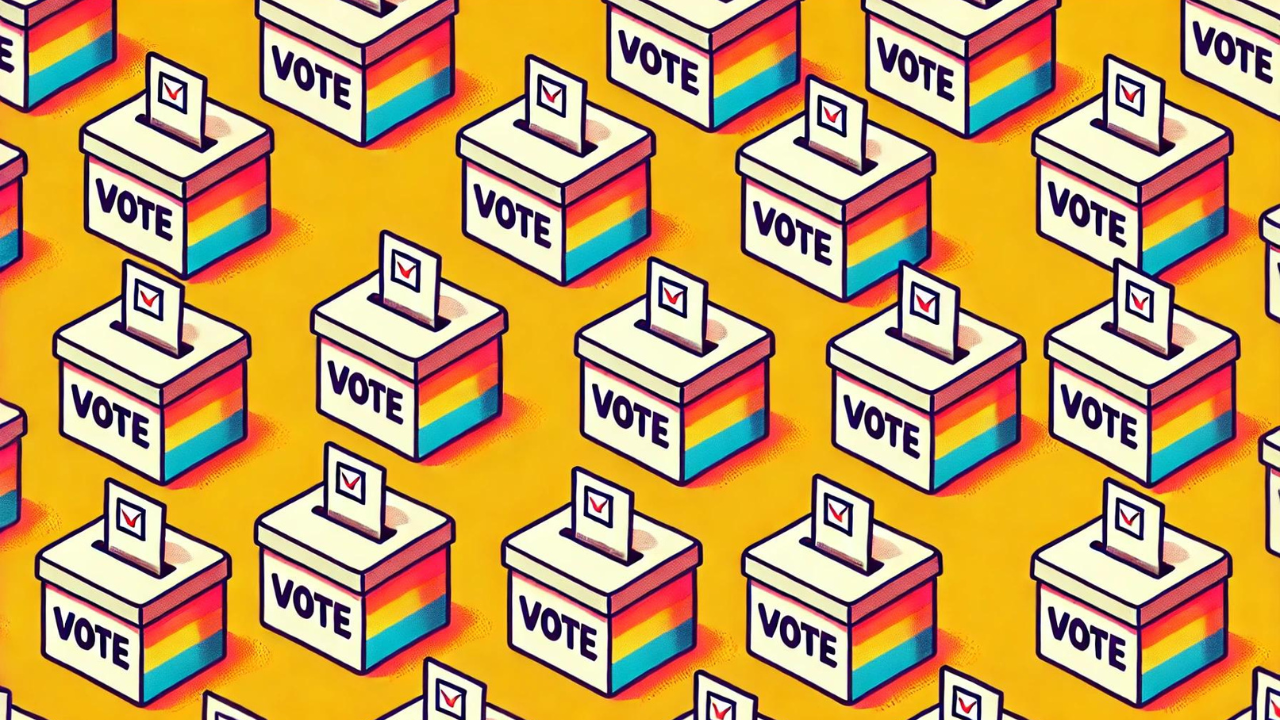The World Economic Forum has identified misinformation as a significant global threat to electoral processes around the world, with a record 50 countries holding elections in 2024, including major democracies such as the U.S., U.K., the EU and India.
This highlights the urgent need for robust regulations and increased media literacy programs to combat the pervasive impact of AI-driven misinformation on democratic processes. But curbing such harms should not stop after the last vote is counted; it must be an ongoing process to prevent the internet from being an ocean of lies.
Sources and breeding grounds of misinformation
Social media has created a breeding ground for misinformation, fundamentally altering public perception and shaping global conversations. They have become fertile grounds for the proliferation of misinformation, particularly during election periods.
The design principles of platforms like TikTok, Meta (formerly Facebook), and others prioritize engagement and user interaction, often at the expense of content accuracy. Algorithms are tailored to amplify content that generates reactions and shares, irrespective of its factual basis. This incentivizes the rapid spread of sensationalized or misleading information, which can significantly influence public opinion and voter behavior.
During elections, these dynamics are exacerbated as political campaigns and interest groups leverage social media to disseminate narratives that align with their agendas. The absence of robust mechanisms to verify information and the declining transparency of metrics further complicate efforts to combat misinformation.
For instance, TikTok’s decision to obscure view counts and Meta’s shutdown of CrowdTangle limit researchers’ ability to track the reach and impact of misinformation campaigns effectively. This opacity not only shields the extent of misinformation from public scrutiny but also hampers efforts to hold platforms accountable for their role in amplifying false or misleading content.
Moreover, the financial incentives of social media platforms often conflict with efforts to curb misinformation. Ad revenue and user engagement metrics drive platform strategies, encouraging the prioritization of content that drives clicks and interactions over content accuracy.
This business model, while lucrative for platforms, perpetuates an environment where misinformation can thrive unchecked, particularly during critical junctures such as elections. As platforms navigate these challenges, concerns persist over their commitment to meaningful reforms that could mitigate the spread of misinformation and safeguard the integrity of electoral processes.
The democratization of content creation, through both user-generated posts and AI-powered tools, further complicates the issue. Deepfake technology, once exclusive to specialists, now allows anyone to create convincing yet fabricated audiovisual content that can mislead millions.
Tech giants are caught in a crossfire between free speech and safeguarding democratic processes. Proposed solutions include stricter content moderation, increased transparency in political advertising, and user education campaigns to improve digital literacy.
As public concern and regulatory scrutiny intensify, tech giants face mounting pressure to implement policies that curb misinformation without stifling open online discourse. This complex challenge demands a coordinated response from all stakeholders to mitigate the dangers of misinformation in the digital age.
Why we fall for misinformation and what to do about it
Misinformation is a pervasive issue that thrives due to the inherent aspects of human cognition and the modern information environment. Our brains are wired to seek efficiency and make quick judgments, often relying on mental shortcuts or heuristics. While these shortcuts generally serve us well, they can also lead us astray when processing information that is false or misleading.
This phenomenon is exacerbated by the illusory truth effect, where familiarity and repetition make information seem more credible, regardless of its actual truthfulness. Consequently, even after being exposed to corrections, misinformation can persist in memory alongside its correction, making it challenging to dislodge.
Moreover, misinformation often aligns with our pre-existing beliefs or social identities, exploiting confirmation bias. We tend to accept information that fits our worldview more readily, reinforcing our existing beliefs and making us less critical of questionable information.
This cognitive tendency is compounded by the echo chambers of social media and the deliberate amplification of falsehoods by political actors and other influencers. Politicians, for instance, capitalize on the illusory truth effect by repeating falsehoods, knowing that familiarity can breed belief, regardless of factual accuracy.
The difficulty in correcting misinformation lies not only in its initial acceptance but also in its persistence in memory. Even when presented with accurate information later, our brains struggle to fully overwrite or dismiss previously learned misinformation. This resistance to correction is further complicated by the emotional appeal of false stories, which often resonate more deeply and intuitively than complex statistical truths.
In essence, combating misinformation requires not just factual corrections but also a deeper understanding of how our cognitive processes interact with the information ecosystem, necessitating proactive measures like pre-bunking – showing people examples of fake news to help them recognize these lies – to inoculate individuals against viral falsehoods before they take hold.
The SIFT method
The SIFT method, developed by Mike Caulfield at the University of Washington, provides a structured approach to navigating the complex landscape of online information. It emphasizes four crucial steps: Stop, Investigate, Find, and Trace. Each step is designed to mitigate the risks of spreading misinformation by encouraging users to pause, verify, and critically evaluate the information before sharing it further.
STOP serves as the initial checkpoint, prompting individuals to resist the impulse to immediately share or react to information encountered online. This step encourages users to take a moment for reflection, recognizing that our rapid-fire consumption of content can often lead to hasty judgments and the unintentional propagation of falsehoods. By pausing to consider the source and credibility of the information, individuals can avoid contributing to the spread of misinformation inadvertently.
Investigate the source of the information. This involves delving deeper into the origins of a claim, questioning the credibility of the author or organization behind it, and examining any potential biases or agendas. By conducting a brief search or consulting reputable fact-checking resources, users can gain insights into whether the information aligns with established facts or is merely speculation or deliberate misinformation.
Find confirmation from trusted sources. This step encourages individuals to seek corroboration from reputable news outlets or fact-checking services. By comparing multiple perspectives and verifying claims across different sources, users can more confidently discern between accurate information and misleading content, thereby reducing the risk of unwittingly promoting misinformation.
Trace the claim back to its original context. Identify the primary source of information and examine whether it has been accurately represented or taken out of context in subsequent discussions or shares. By ensuring the accuracy and integrity of the information from its inception, users can help prevent the perpetuation of distorted narratives or deliberate falsehoods.
The SIFT method equips individuals with practical tools to navigate the digital landscape responsibly. By fostering a habit of critical thinking and verification, it empowers users to contribute to a more informed and trustworthy online environment where misinformation is actively identified and mitigated before it can proliferate unchecked. Adopting such methods not only safeguards personal credibility but also promotes broader digital literacy and resilience against the harmful effects of misinformation on society.
How tech companies combat the misinformation wave
The rampant spread of misinformation online poses a severe threat to democracy and societal trust. It transcends borders, impacting diverse political landscapes worldwide.
Research shows that misinformation may not always cause a complete shift in political beliefs, but it can subtly yet significantly influence behavior. By misleading people about voting procedures or eroding confidence in elections, misinformation can discourage participation and fuel distrust in democratic institutions.
Recent high-profile elections have become prime targets for misinformation campaigns. Exploiting vulnerabilities in digital ecosystems, these efforts sow discord and manipulate public opinion. The rise of AI-generated content, such as deepfakes and fabricated narratives, further complicates the fight by challenging traditional verification and accountability methods.
Fortunately, efforts to address these challenges are underway. Governments and tech platforms are exploring solutions – from regulatory frameworks to promote online transparency and accountability, to educational campaigns that build media literacy and critical thinking skills.
OpenAI has announced stringent measures to prevent misuse of its AI tools, including banning political entities from using them and implementing authentication tools to verify content authenticity.
Meta, owner of Facebook and Instagram, will uphold labeling practices for state-controlled media, restrict political ads in the final campaign week, and enforce transparency in political content creation using AI.
Alphabet’s Google plans to limit Gemini’s responses to election-related queries and enforce the disclosure of AI-generated content in ads. YouTube, which is owned by Alphabet, will mandate the disclosure of synthetic or altered content in videos to enhance viewer awareness.
Microsoft is introducing tools to protect candidates’ images from manipulation and assist their campaigns in navigating AI, while also enhancing Bing’s search results for authoritative election information.
Twitter, now X, faces criticism but emphasizes crowdsourced fact-checking through Community Notes.
TikTok, despite its stance against paid political ads, collaborates with fact-checkers to curb misinformation.

